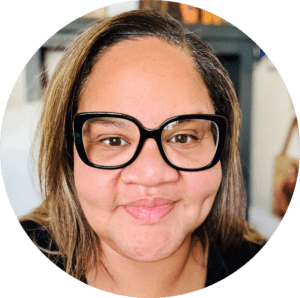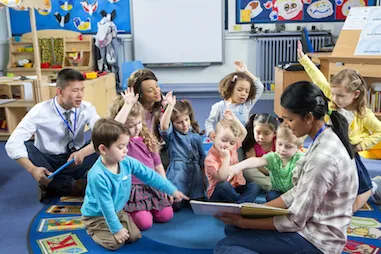Helping Children Grow their Thinking Deeper and Wider


Almost ten years ago, I started a job as an education program specialist. My area of focus was on creating content for and delivering professional development to early childhood education teachers and administrators. One of my first “big” projects was to help create and deliver professional development training on the Common Core. The Common Core was new to me, so I spent a lot of time learning about it through research and professional development. I learned two very important things in that process:
- Assigning students tasks to complete or listing facts they need to know is not enough to promote their critical thinking on a topic; you need to understand how students learn.
- A well-rounded education should teach students both range and depth.
When I was a classroom teacher, especially when I was a new teacher, I relied heavily on grade-level standards to tell me what I needed to teach and when I needed to teach it. With such a narrow view of my role as a teacher, I’m sad to report that I missed out on a lot of good teaching and learning opportunities. In retrospect, I wish I had known sooner that understanding how students learn could have helped me unleash the most powerful teaching I ever could have hoped to bring to my classrooms.
Here’s the crux of what I now know about how students, especially young students, learn: it doesn’t happen in a nice, straight line. In fact, it can look messy. At times, it can look like regression. Also, it doesn’t happen in the same ways for each child. Some children follow the sequential order of learning more sophisticated skills, while others may skip forward a few steps or seemingly move backward in their knowledge, skills, or abilities. Finally, I’ve learned that learning is not just about what students know; it’s also about what I do in response to what they know and how that hinders or encourages continued learning.

With that knowledge in mind, I’ve come to really appreciate the value of learning progressions (LPs), especially for use with young learners. LPs are defined as “…a carefully sequenced set of building blocks that students must master en route to mastering a more distant curricular aim. These building blocks consist of subskills and bodies of enabling knowledge” (Popham). Put plainly, LPs provide a framework that helps illustrate the new knowledge, skills, and abilities students may gain as they learn in more sophisticated ways.
At Teaching Strategies, LPs are reflected in the Objectives for Development and Learning. Every element in the Teaching Strategies ecosystem, including The Creative Curriculum, is connected to the research-based objectives for development and learning. These objectives span from birth through third grade and enable teachers to see students’ development and learning along a progression that reaches across the whole of the early childhood years. This critical view of learning lets teachers see children both as they are—competent beings with knowledge—and as new learners who still need to grow in their knowledge, skills, and abilities.
Back when I was learning about the Common Core, I used to attend professional development sessions with colleagues who were so full of wisdom and willing to share some of that goodness with me. One of the many gems of knowledge I got was from a colleague who was helping me understand the elevated role of critical thinking in the new standards. She said, rather than having to teach students a little bit about a lot, teachers were now being tasked with helping students learn more about a little. She said, “We have to help them grow taller, not wider.” That has stuck with me all these years because I can visualize it simply (if you look at Figure 1, you can see the way my brain thinks of it). I think, when used well, LPs allow you to provide both depth and range in your teaching, maximizing the benefits for students.

In this month’s Head Start webinar, we will talk more about the importance of learning progressions for the teaching and learning cycle. The panel will discuss Teaching Strategies’ Objectives for Development & Learning and the ways teachers can use them as a roadmap in their classrooms.

Join us in a free webinar
Examine the importance of learning progressions for the teaching and learning cycle in this on-demand webinar.